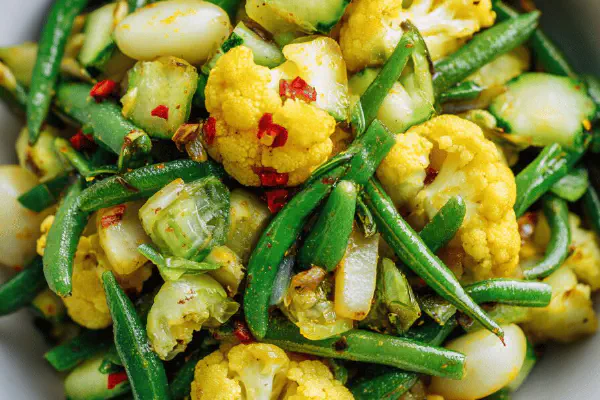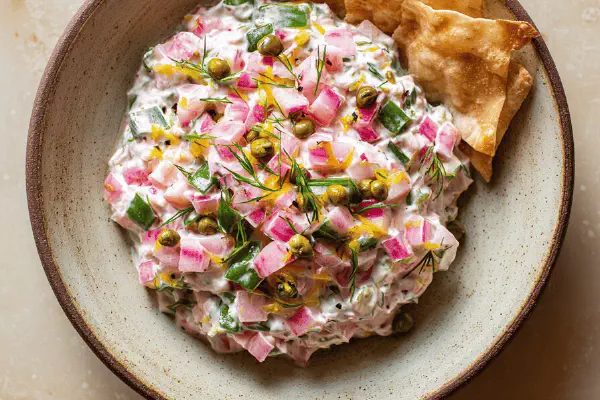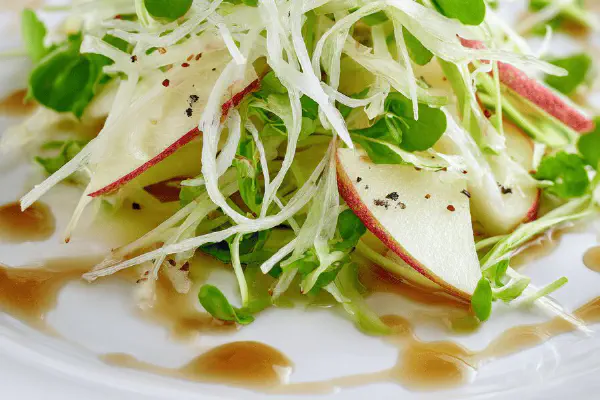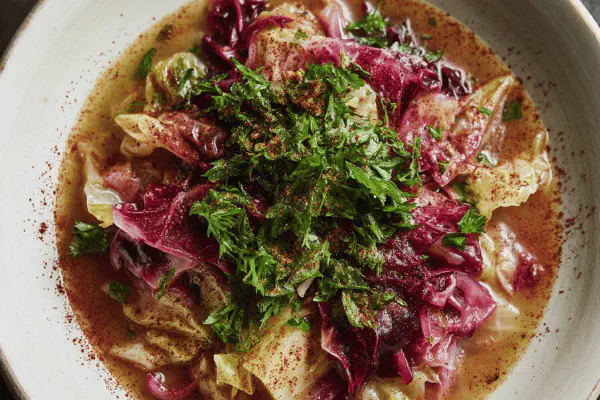Fresh Raisins in Syrup
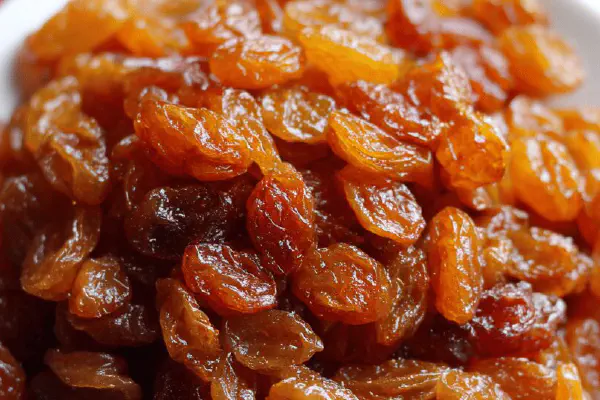
By Emma
Certified Culinary Professional
Ingredients
- 550 g seedless grapes or 3 1/4 cups
- 140 g honey (or 3/4 cup sugar)
- 50 ml fresh water 1/5 cup instead of 1/4
- 15 ml fresh lemon juice 1 tbsp
About the ingredients
Method
- 1. Rinse grapes well. Remove stems. Place in medium saucepan. Add honey, water, lemon juice.
- 2. Medium heat. Bring to gentle boil. Listen for tiny bubbles rising steadily, not a roar or rapid boil.
- 3. Lower heat. Simmer uncovered. Watch grapes slowly turn translucent, juices darken slightly, syrup begin to thicken on sides of pan, about 25-30 minutes.
- 4. Stir occasionally; avoid smashing grapes. Syrup will coat back of spoon with slight resistance.
- 5. Cool off heat. Let syrup and fruit sit off stove, cool completely for best flavor and texture.
- 6. Transfer to airtight container. Refrigerate up to 14 days. Use on thick Greek yogurt, pancakes, or oatmeal.
Cooking tips
Chef's notes
- 💡 Grapes need slow simmer. Medium heat only. Too hot pops skins quick, juice leaks, syrup clouds. Watch bubbles rise steadily, tiny, no roar. Use honey for subtle woody warmth that sugar lacks. If allergic, maple syrup okay but shifts flavor. Lemon juice stops sugar crystallizing; don’t skip. Add water less than usual, speeds syrup thickening without burning. Check skin bubbles and juice darkening to judge readiness, not timer alone. Stir rarely to avoid breaking skin, syrup clarity suffers if burst.
- 💡 When grapes start translucent, texture changes slowly. Test by biting one grape—should snap gently, tender but not mush. Syrup thick enough to coat spoon but still fluid. Remove from heat before syrup is hard boil; residual heat finishes thickness during cooling. Cooling off stovetop changes texture—crispy snap fades to tender burst. Avoid plastic storage; glass or ceramic better to preserve flavors, avoid trapped odors. Refrigerate airtight for up to two weeks, juices ferment if left too long.
- 💡 If lemon acidity is too sharp, pinch baking soda to soften edges, but add sparingly. Water quantity is tricky—too much dilutes syrup, too little risks burn. Monitor carefully near end. Stir occasionally, not constantly. Burst grapes make syrup cloudy and dull. Tolerate some skin cracking but if too much, lower heat further. Patience key; this isn’t a fast preserve. Grainy raisins mean underripe grapes or cooking too fast. Use seedless only; stems impact bitterness if left in.
- 💡 When syrup thickens on pot sides, it’s visual clue. Coat back of spoon test works well; syrup clings but dribbles off. If syrup thickens too fast, reduce heat or add tiny bit water. Cooling allows gradual thickening without scorch. Honey adds complexity but sugar works fine for simpler version. Swap lemon juice for lime if you want different acidity profile, but acidity needed to break saccharin edge. Quick cook jams fail here; grapes resist high heat. This keeps translucent look, jewel-like softness.
- 💡 Use leftover reduced syrup as a drizzle on salads or cocktails; saves waste, adds subtle sweet-tart boost. Stir grape skins gently when sampling—burst too many, syrup goes hazy. Let syrup and grapes cool fully before storing to prevent condensation. Avoid plastic lids that trap moisture. Taste checks during simmer better than clock. Texture changes subtle; skin bubbles soft, juice thickens slight. Slow steady heat, no rush. These tips learned from trial—slow, precise, sensory cues over timers.
Common questions
How to know when grapes are done?
Check skin bubbles gently popping, grapes turn translucent—bite one. Should be tender but firm. Syrup coats spoon. Not hard boil but thickened. Visual and tactile clues work better than clock.
Can I swap honey for sugar?
Yes, sugar works but syrup loses honey’s woody warmth. Maple syrup possible if allergy; changes flavor. Sweetness similar but texture varies slightly. Lemon juice still needed to stop crystals.
What if grapes burst too early?
Too high heat usually. Lower flame, stir less. Burst grapes cloud syrup, texture worse. Use seedless, avoid firm underripe fruit. Slow simmer keeps skins intact longer—better syrup clarity.
How to store syrup and grapes?
Airtight glass or ceramic jars best. Refrigerate up to 14 days safe. Avoid plastic lids trapping moisture, cause soggy edges. Cool completely before sealing. Sometimes juices ferment if left too long; watch for off smells or fizz.
